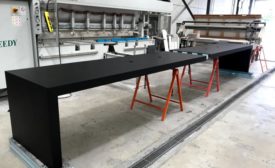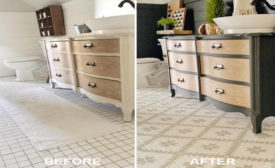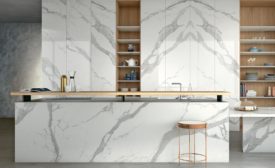Installation & Technical Tips
Inside the Shop
A discussion held during a recent stone industry event organized by Stone World and the Natural Stone Institute turned to the hot topic of understanding the makeup of quartzite, meeting customer expectations about the material and how to cut it
Read More
Technical Focus: A Brief History of Gauged Porcelain Tile Panels
Over the last 20 years, large-format porcelain tiles have evolved significantly from when they were first developed
January 25, 2021
Why quartz?
From colors to veining to applications, a couple of fabricators discuss how quartz surfacing is trending
October 2, 2019
Our eNewsletters are a rock solid source of industry insights!
Stay in the know on the international stone and tile industry trends.
JOIN TODAY!Copyright ©2024. All Rights Reserved BNP Media.
Design, CMS, Hosting & Web Development :: ePublishing













